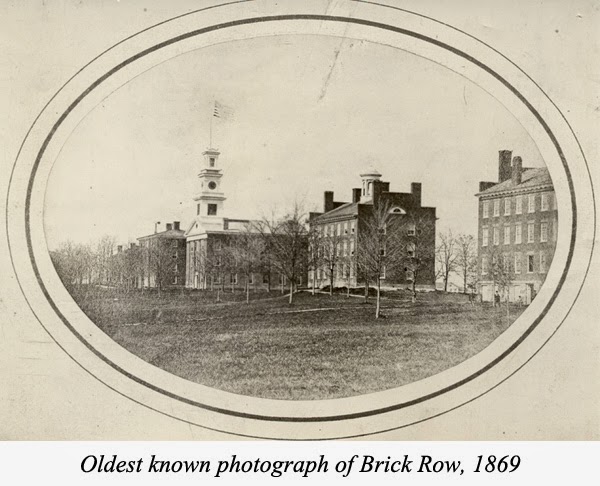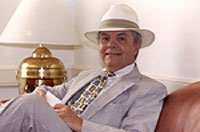I am contacted often regarding Western Reserve Academy's history. Here is a brief overview of major WRA happenings. Please do contact me for additional details not provided here. Ours is an exciting and unique history on many levels.
Western Reserve Academy in Hudson, Ohio, was founded in 1826 as the preparatory school for the Western Reserve College, located in Hudson from 1826 until it moved to Cleveland's University Circle in 1882. The school became autonomous, then completely independent, of what is now Case Western Reserve University in Cleveland. There is no current connection between our two institutions except for a common founding date, and the fact that our school now occupies the historic buildings that once were the seat of the old college.
The earliest buildings were constructed starting in 1826 with the building of Middle College, where the cornerstone was located, and which served as a dormitory from its completion in 1827 until its demolition in 1912. South College, which was the home of the old Preparatory School, was built in 1829-30 and continued to be the main classroom and dormitory building for the school until the college moved to Cleveland. This building was demolished in 1884. Both of these were on Brick Row, that line of buildings facing west that were modeled loosely on the Brick Row at Yale College in New England. In fact, during the 1840's and '50's, the old college liked to call itself "the Yale of the West."
The historic Brick Row consists of several buildings lined up on the ridge facing west in order to best catch the sunshine that was needed to light 19th century structures. Lemuel Porter, who had emigrated from Waterbury, CT, and had built the wonderful Church at Tallmadge Circle (1825), was hired as the architect/ builder for the campus of the old college. He had completed the two buildings described above, and was just finishing up the duplex President's House (1829-30) when he died suddenly in the fall of 1829. The college trustees decided to extend the contract to his young son, Simeon Porter (1807-1871). He was only 22 years of age, but had worked as an apprentice to his father on his college projects.
Using the plans of his father, often based on the models in the Asher Benjamin pattern books, Simeon Porter completed the work on Brick Row and then went on to a distinguished career as an architect in Cleveland. Simeon and his father were responsible for introducing the Greek Revival style to Hudson and this campus, and the Brick Row is an excellent example of this important architectural style.
Simeon Porter completed the majestic Chapel (1836); the North Hall dormitory (1838), one of the oldest in Ohio; Loomis Observatory (1838) based on the plan of astronomer Elias Loomis (1811-1889), who had gone to Europe to purchase the instruments that are still in this little building. Loomis Observatory is now the 2nd oldest in this country, the only one older is also an 1838 structure at Williams College in Massachusetts. Simeon also built the Athenaeum (1843) on the north campus that was the main classroom building on campus until the completion of Seymour Hall (1914) on the Brick Row. He also helped build the Nathan Seymour House (1842) on Prospect Street, used as a guesthouse. The other building on WRA's historic Brick Row is the John D. Ong Library (2000), designed to fit into the line of historic buildings on this walkway.
James W. Ellsworth (1849-1925) was the multi-millionaire Hudson man who became the chief benefactor of the town during the 20th century and the principal benefactor of Western Reserve Academy which "reopened" on his foundation in 1926. It was his gift that saved the school and its historic buildings, which might otherwise have been demolished, as the school itself went bankrupt in 1903. Ellsworth is the man who rescued the school and put it on a sound financial basis which is why it is one of America's leading independent schools.
You can read about the early history of this campus in Frederick Waite's Western Reserve University, the Hudson Era (1943) which should be available for loan from your local library. Additional historical significant articles are also always available by reading my archival blog postings.

